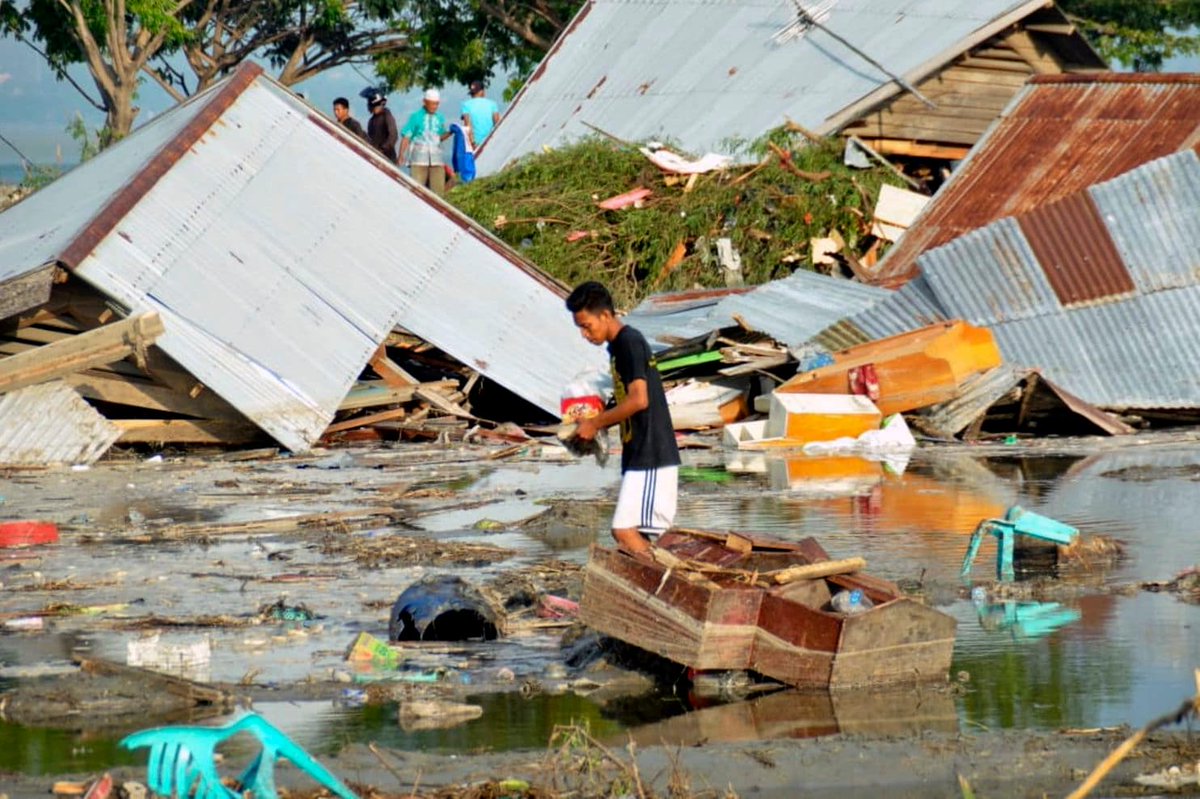Survivors in Indonesia are helping themselves with mix of stoicism and fatalism

- Country:
- Indonesia
About 100 metres from the beach north of the earthquake-shattered Indonesian city of Palu, a wooden A-frame home is rising in the midst of a wasteland of concrete, mangled sheets of iron and uprooted trees.
In the absence of help, survivors of last Friday's quake and a devastating tsunami minutes later are helping themselves with a mix of stoicism and fatalism, picking through debris to construct homes and rescue household items.
Two brothers - Nanang and Eko Joko - are busy nailing planks of salvaged timber in the hammering heat.
"I was born here and it is better to die here," said Eko, 41, a furniture maker, standing near three wrecked sewing machines that once upholstered sofas in a nearby workshop.
The 7.5 magnitude earthquake triggered a devastating tsunami - three waves in only a few minutes - that levelled much of the coastline for 300 km (185 miles) north of Palu. Inland, the tremor destroyed homes, while liquefied soil sucked up entire villages.
According to Indonesia’s disaster mitigation agency, 1,424 people have died, more than 2,500 have been injured and 66,238 homes damaged. There are 70,821 internally displaced people at 141 sites.
In the centre of Palu, tent cities are starting to appear though further away aid has been slow to arrive and evacuation centres are still being constructed. An assessment from the ASEAN Humanitarian Assistance Centre reviewed by Reuters said 191,000 people had “urgent needs”, including 60,000 children and elderly.
"Where else can we build? Who will give us the money to buy land elsewhere?” said Eko. "Besides, the evacuation centres are not hygienic."
The makeshift house will shelter ten people. As the construction continues, male members of the community are staying in the teetering ruins of their former homes, some of them shorn in half.
Within minutes of the earthquake, as people gathered outside their homes, the men said they heard a loud noise, like “rolling thunder”.
“Our home withstood the earthquake but the tsunami was too much. The wave was half as high as that,” said Nanang, pointing to a 20-metre-high telecommunications tower.
Residents ran “as far and as fast” as they could after hearing the roar of the ocean but about 50 of the roughly 1,000 residents in the neighbourhood were killed, the men said. On Thursday, four bodies were recovered a short distance from the emerging home.
While the government has helped recover some bodies and cleared the road, the area has received no other help, the men said.
“We will start again here ourselves because God does not strike twice,” said Eko.
“We can reinforce as much as we want. We could build dykes. But how tall are we going to build them? How can we withstand the forces of nature?” (Editing by Ed Davies and)
(With inputs from agencies.)










